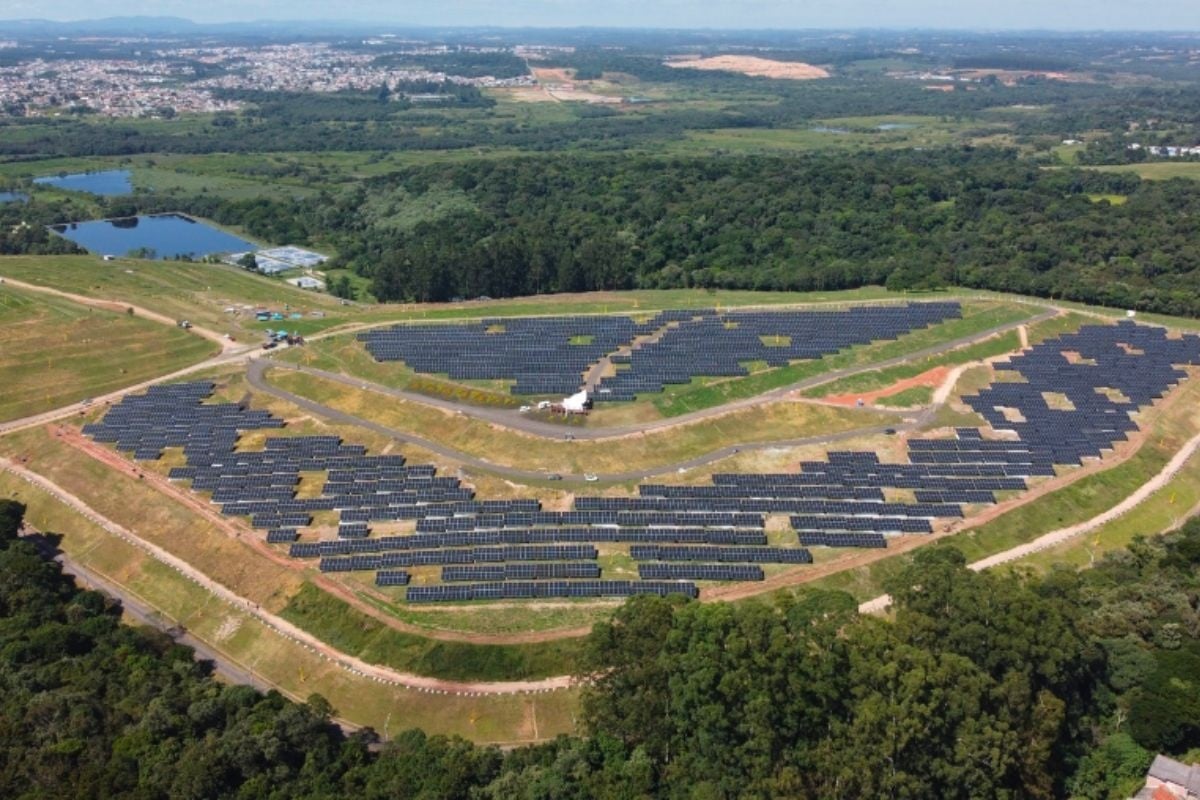With approximately 8,600 panels, the space now functions as a solar power plant
Posted on 04/03/2023
A solar power plant installed at the Caximba landfill, which was deactivated in 2010, is the new symbol of Curitiba. Dubbed the Solar Pyramid, due to its shape, the station with an installed capacity of 4.55 megawatts (MW) was inaugurated last Wednesday (29) on the 330th anniversary of the founding of the city.
The project is part of Curitiba Mais Energia, one of the city’s strategies to combat and mitigate climate change through renewable energy production. The municipality will be able to reduce the emission of two thousand tons of carbon dioxide into the atmosphere, thus contributing to achieving the city’s goals to reduce greenhouse gases.
The solution also results in savings for public coffers. This is because the energy generated from the photovoltaic modules of the solar power plant is injected into the distribution network of Copel (Companhia Paranaense de Energia Elétrica) and the amount is deducted from the municipality’s energy bill.
The estimated monthly savings are 30% of the value of the energy bill for public buildings in the municipality, which could represent, annually, R$2.650 million, which could be reflected in benefits for the population.
innovation
With approximately 8,600 panels, Pirâmide Solar do Caximba is the first landfill solar power plant in Latin America.
“This is a very complex project, and it required a lot of technical study by the engineering team, mainly to overcome the soil and terrain challenges of a photovoltaic system that had never been done before in the country. It took about two years of development and analysis to come up with a safe and efficient project.” Marcelo Abouhamed, commercial director of Grupo Bonö Energia, a solar power generation engineering and projects company.
However, according to the expert, the plant “becomes a reference for sustainable design and ecological construction in landfills for other municipalities and private enterprises for waste treatment and final disposal in Brazil.
International support
To get off the ground, the factory invested R$28 million, resulting from several partnerships. The estimated return on investment is about five years. Selected by the C40 Cities Network and awarded resources from the C40 Cities Finance Facility (CFF) for preparation, the project follows the distributed generation rules of Aneel (National Electric Energy Agency).
It is also a collaboration between the C40 Large Cities group for Climate Leadership and the Deutsche Gesellschaft für Internationale Zusammenarbeit (GIZ) GmbH, which supports cities in developing projects to reduce greenhouse gas emissions and limit the rise in global temperatures.
The program is funded by the German Federal Ministry for Economic Development and Cooperation (BMZ), the UK Department for Business, Energy and Industrial Strategy (BEIS) and the US Agency for International Development (USAID).
The Solar Pyramid project was presented at the opening of Smart City Expo Curitiba 2023, the country’s largest smart city event, held in March in the capital, Paraná.

“Writer. Analyst. Avid travel maven. Devoted twitter guru. Unapologetic pop culture expert. General zombie enthusiast.”

